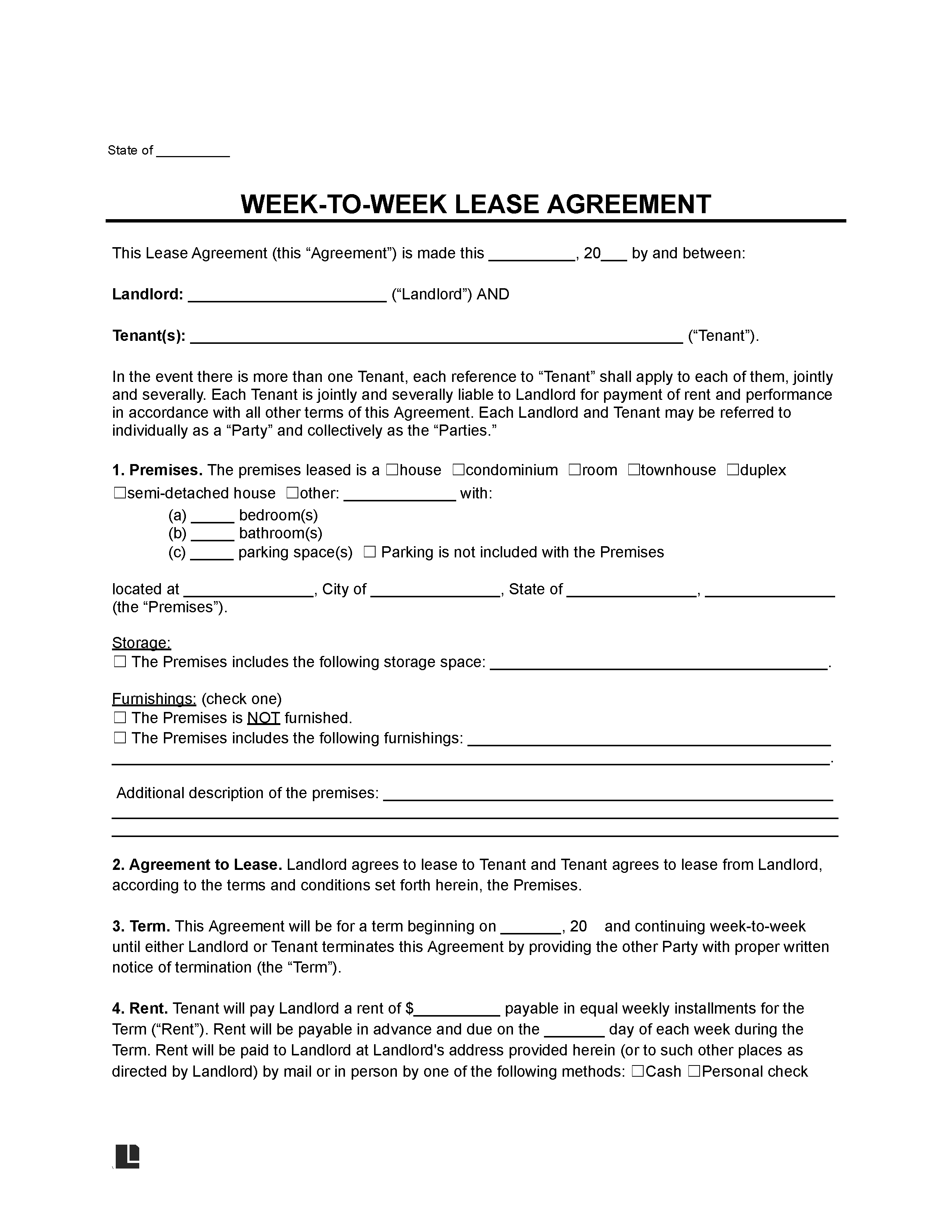A week-to-week lease agreement is a legally binding contract between a landlord and tenant where the rental period is renewed every seven days. This type of lease is often favored in vacation hotspots, urban areas with frequent tenant turnover, or for renters who need temporary accommodations. The lease automatically renews at the end of each week unless terminated by either party with proper notice.
Benefits of a Week-to-Week Lease Agreement
- For Tenants: Whether you’re between jobs, traveling, or just seeking temporary housing, this arrangement lets you avoid the long-term commitment of traditional leases. No need to worry about penalties for breaking a year-long lease.
- For Landlords: The main advantage is the ability to adjust rental rates based on demand, making this arrangement particularly useful in vacation rental markets or areas with fluctuating demand. Additionally, week-to-week agreements allow for rapid tenant turnover, minimizing vacancies.
Key Elements of a Week-to-Week Lease Agreement
- Rental Payment Terms: Payments are typically due at the start of each week. Penalties for late payments should be clearly outlined, ensuring tenants are aware of the consequences. Utilities should also be included (cable, internet, electricity, etc).
- Party Information and Property Details: The names and addresses of the parties and the physical mailing address and description of the premises.
- Termination and Notice Requirements: Most states require a 7-day notice for either party to terminate the lease. However, some states may differ, so it’s essential to check local regulations.
- Security Deposits: Landlords typically collect a security deposit equivalent to one week’s rent, which can be used for repairs or unpaid rent at the end of the tenancy.
- Additional Terms: where the tenants are allowed to park and any mention of pets (if permitted).
Required Disclosures
Depending on the rental property and state regulations, landlords might need to provide specific disclosures:
- Disclosure of Lead-Based Hazards
- Asbestos Disclosure (Word)
- Moving Checklist
- Bed Bug Addendum
- Carbon Monoxide and Smoke Detector Addendum (Word)
- Smoke-Free Addendum
- Flood Hazard Area Disclosure (Word)
- Death in Rental Unit Disclosure (Word)
- Illegal Substance Contamination Disclosure (Word)
- Pet Addendum
- Foreclosure Notice (Word)
- Shared Utilities Disclosure (Word)
- Mold Disclosure (Word)
Ending a Week-to-Week Lease Agreement
| State | Required Notice | Statute |
|---|---|---|
| Alabama | Seven days | § 35-9A-441(a) |
| Alaska | 14 days | § 34.03.290(a) |
| Arizona | 10 days | § 33-1375(A) |
| Arkansas | Seven days | § 18-17-704(a) |
| California | Seven days | § 1946 |
How to Write a Week-to-Week Lease Agreement
- Step 1: Include the Information of the Parties: Add the names of the tenant and landlord, property address, and rent amount.
- Step 2: Establish the Validity Period: Enter the precise start and end dates of the lease.
- Step 3: Describe the Premises: Indicate the exact address and details of the property.
- Step 4: Outline Payment Terms: Specify when rent is due and acceptable payment methods.
- Step 5: Define Notice Period: Clearly state the required notice for termination by either party.
- Step 6: Add special clauses: Security deposit details, late fees, pet policies, etc.
- Step 7: Add Signatures and Date the Document: Both the landlord and tenant must sign and date the agreement in the final section.
Week-to-Week Lease Agreement Sample
You can download a week-to-week lease agreement below in PDF or Word format.


